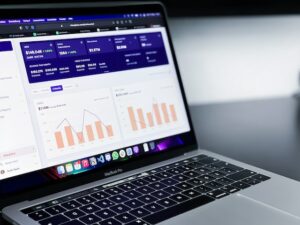The midyear market mettle of prominent athletic footwear powerhouse, Nike, has raised eyebrows and stirred conversations among investors and industry enthusiasts alike. In this article, we will delve into Nike’s recent performance, analyze the factors contributing to their clipped growth, and explore the implications for investors. Additionally, we will examine emerging consumer trends that are shaping the athletic footwear industry. So, let’s take a closer look at the current state of affairs for Nike and the wider market.
Nike’s Clipped Performance:
Nike, a global leader in athletic footwear, apparel, and equipment, has historically been a strong performer in the market. However, recent developments have led to a decline in their growth trajectory, warranting a closer examination. Despite their powerful brand presence and loyal customer base, Nike has faced several challenges over the past months, resulting in a clipped performance.
Factors Influencing Nike’s Performance:
- Supply Chain Disruptions: Like many other businesses, Nike has been grappling with supply chain disruptions caused by the ongoing COVID-19 pandemic. From manufacturing delays to shipping bottlenecks, these challenges have affected the company’s ability to meet consumer demand and fulfill orders promptly.
- Increased Competition: The athletic footwear industry has become increasingly competitive, with numerous emerging brands and established competitors vying for market share. Nike has faced intensified competition in recent times, compelling them to adapt and refine their strategies to maintain their market position.
- Shifting Consumer Preferences: Consumer preferences and trends are constantly evolving, and the athletic footwear industry is no exception. Nike has experienced a shift in consumer preferences towards sustainable and ethically produced products. Adapting to this changing landscape requires significant investments and adjustments in their product offerings.
Implications for Investors:
Nike’s clipped growth may raise concerns for investors. However, it’s essential to view this setback in the broader context of the market. While Nike’s performance may have faltered in the short term, the company’s strong brand equity and global presence position them well for potential recovery. Investors should consider the long-term growth potential of the athletic footwear industry and Nike’s ability to adapt to changing consumer preferences.
Emerging Consumer Trends:
As we analyze Nike’s clipped performance, it’s crucial to explore the emerging consumer trends that are reshaping the athletic footwear landscape:
- Sustainability and Ethical Production: Consumers today are increasingly conscious of the environmental impact of their purchases. Brands that prioritize sustainable and ethically produced products are gaining favor with consumers. Nike and other industry players must align with these values to maintain relevance and attract environmentally-conscious consumers.
- Direct-to-Consumer (D2C) Approach: The rise of e-commerce and social media platforms has facilitated direct communication between brands and consumers. Adopting a direct-to-consumer approach allows companies to gather valuable customer insights, build stronger relationships, and offer personalized experiences. Nike’s online presence and digital marketing efforts are pivotal in navigating this evolving consumer landscape.
- Active Lifestyles and Wellness: The global focus on health and wellness has fueled the demand for athletic footwear and apparel. Nike and its competitors have an opportunity to tap into this trend by promoting their products as essential tools for maintaining an active and healthy lifestyle.
Conclusion:
Nike’s midyear market mettle has faced a stumbling block, with their growth trajectory being clipped due to various factors such as supply chain disruptions, increased competition, and shifting consumer preferences. However, it’s important to view this setback in the wider context of the athletic footwear industry and emerging consumer trends. Investors should consider the long-term growth potential and Nike’s ability to adapt to changing market dynamics. By embracing sustainability, adopting a direct-to-consumer approach, and capitalizing on the trend of active lifestyles and wellness, Nike can regain its momentum and emerge stronger in the ever-evolving market.











